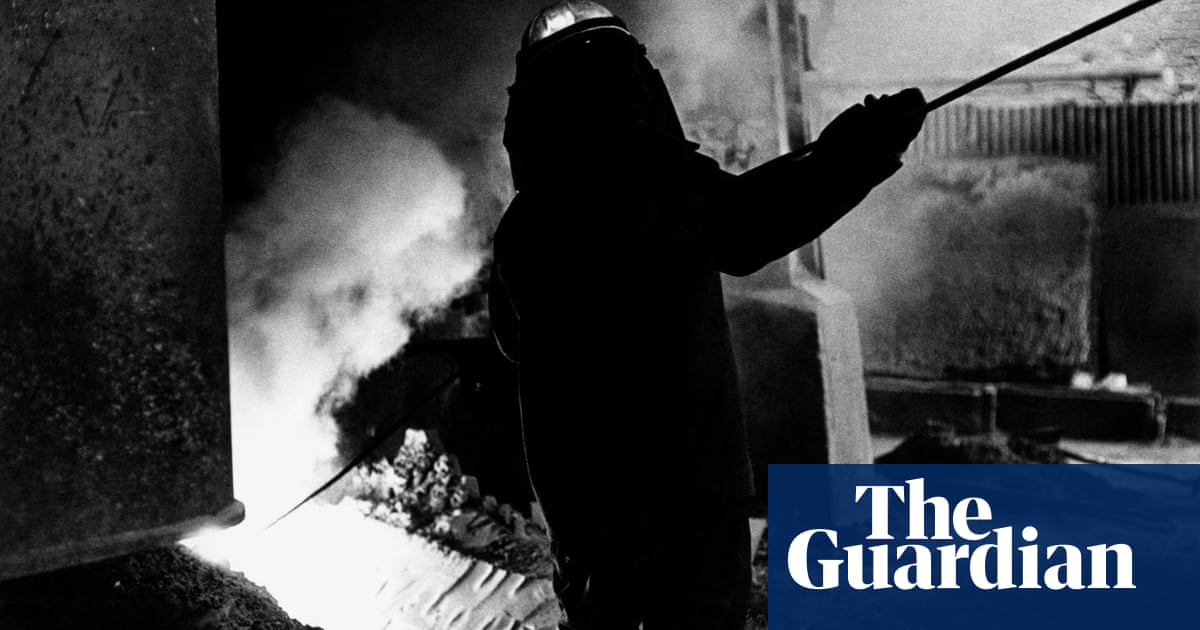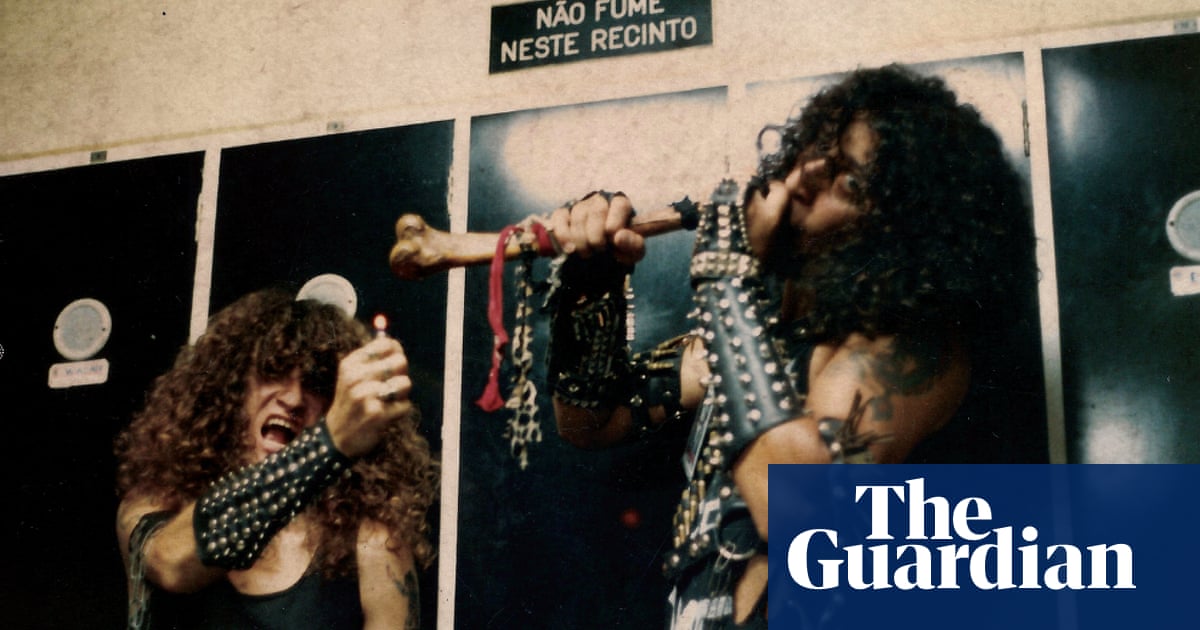
On a January night in the tiny Herefordshire village of Eardisland, a crowd of hundreds is being led to an orchard down a muddy country lane. Their leaders wear tall hats, garlanded with fruit, feathers and flowers; their faces are a damp, mossy, green; their ankles jingle with bells. It is very dark: the only light comes from a crisp, crescent moon and the flaming torches that men, women and children hold in their hands.
The scene may sound sinister, but there is joy in the air at this crop-blessing wassail, a midwinter folklore ceremony, usually in apple-producing counties, involving singing, dancing and other folk customs. At Eardisland, the Leominster morris – they in the extravagant hats, plus flowery jackets made from old bedsheets and curtains – pour cider made from last year’s apples on to tree roots, hang toasted bread on tree branches to tempt the spirits, and light fires to represent renewal and the coming spring sun. The mood is jolly. “I’ll hopefully not set my leg on fire,” says the announcer, Josh Johnson, to laughter, before stamping flames out.
This wassail isn’t an oddity either, says Jon Wilks, musician and the founder/editor of Tradfolk, a new website that aims to bring together different iterations of traditional folk culture today. Wilks decided to put together a wassailing directory for 2022, assuming it would be a quick job. “I thought there’d be 15 or so wassails in the West Country. Nine hours and close to 50 entries later, I was still going.” (His tally currently sits at 61.)
The list combines long-established groups and new starters, who came together via Instagram and TikTok – Wilks wonders whether the Wellerman craze of a year ago took people from sea shanties to wassails, and, of course, this is a relatively low-risk way to enjoy live music in the Covid era. He is a late starter himself: a former magazine editor in Dubai and Tokyo who returned to the UK in his late 30s, he found out about his morris-dancing grandfather after his father died. “Most people have an affair or buy a sports car for their midlife crisis,” he laughs. “I fell for traditional music, then fell down the rabbit hole.”
He has found many others like him who are not from a folk background or family drawn in what he calls “the idea of shared traditions, folk memory and a collective unconscious”. Wassails in the dark of winter seem to hold a particular appeal, he says. “Standing in a field lighting fires or making noise with other people at the toughest time of year, feels like what we all need, especially when we all live digital lives, being constantly bombarded with bad news.”
He mentions one of his interviews on Tradfolk with the artist Ben Edge, sometime video director for Fat White Family and Raf Rundell, and curator of last year’s Ritual Britain exhibition at the Museum of British Folklore. Edge thought there was “no coincidence that we are dealing with the climate crisis and people are looking for immediate ways to reconnect with nature and have a sincere concern for the land”. People often found these rituals peculiar at first, Edge explained, then spotted something “profoundly human and universal” in them. “And when you think about how we haven’t spent time together with strangers in recent years, doing something celebratory with them, safely, outside, becomes even more powerful,” says Wilks.
But wassails have changed in their nature a lot, says the folk historian Steve Roud, creator of the Roud folk song index and writer of The English Year. They were first recorded as an activity in the middle ages, and although many claim ancient or pagan origins for them, there “is no evidence for this – it could only be pure speculation or guesswork”, says Roud. The word wassail comes from “waes hael”, a phrase in Old English and Old Norse meaning “be healthy”, although this meaning gained intimations of celebration through time (the songs sung at these rituals are also known as wassails).
Wassails have become subject to “a kind of touristification”, Roud says, “and that means things might be changed about customs to please other people – not that this is good or bad. It’s just the way the modern world is.” But he does warn against people trying to “project their present preoccupations backwards in time to explain the way things were”. For him, wassailing was less a spiritual activity in agricultural communities than something that served an earthier purpose. “Wassails were basically excuses for men to get drunk,” he says brightly. “They were also very local, not at all about attracting outsiders into a community.”
People often ignore that wassailing was also about poverty and begging for money; in agricultural communities, after all, there was little work in the winter. Wassailing also used to come in two kinds: the crop-blessing form and the house-visiting wassail (often involving women, going house to house with a wassail bowl to share a drink, usually cider, giving luck for the year).
Some elements have thankfully been evolved out: morris men still wear face paint, but blackface is much less common. In June 2020, the Joint Morris Organisation, comprising members from different morris federations, said it would bar from its events any sides that wore blackface. “Morris is a living tradition,” it said in a statement, “and it is right that it has always adapted and evolved to reflect society.” Some still claim its use was innocent and divorced from issues of race, but Nicholas Wall of the English Folk Dance and Song Society has persuasively argued that this part of the tradition had strong ties to minstrelsy.
Similar customs to wassailing, such as the Mari Lwyd in south Wales, first recorded in the early 19th century, added mischief to the mix. A man draped in a cloak carried a horse’s skull on a stick, creating a terrifying creature. Going door to door with friends, he would engage in a ritual with homeowners called pwnco, exchanging rude rhymes. “These rituals were also often threatening, as trick or treating used to be,” Roud adds. “And they always ended with money being given before the wassailers went away.”
Mari Lwyds have been revived in recent years at festivals in Chepstow, and at local celebrations in Newport and Llanwrtyd Wells; many wassailing traditions today still play to folklore’s eerie underbelly. At Eardisland, we are told to shout, at a safe distance, to get rid of evil spirits. The spectre of Covid is not far from these incantations. “Everybody shout to scare this thing away!” Johnson bellows.
Newer sides, such as Blackthorn Border morris, formed in 2019, present a darker, more gothic exploration of folklore. In Wilks’ assessment, they’re “thrillingly aggressive … the heavy metal of morris!” Comprised of long-time dancers and newcomers, and performing under character names such as Raven and Death’s Head Hawkmoth, they dance in local sacred sites on the Welsh borders, such as Hay Bluff and Arthur’s Stone.
Herefordshire born-and-bred member Nyssa Ebert – AKA recorder player and singer Hare – joined in early 2020. She has long been a Wiccan practitioner, a world she describes “as very underground 20 years ago, but it’s now very open and accepting and present on social media”. This is also how she found and joined Blackthorn Border morris.
But she does not claim wassailing as a pagan activity. “We’ll never know whether its roots are pagan or Christian, but I don’t think that matters – to me, a wassail’s an ultimate expression of folk magic, and of bringing the idea of blessings into your community, for families, and the nature around you.” She wonders whether pandemic lockdowns have heightened this connection, she says, helping to explain why they’re prospering now. “Suddenly, last year we weren’t waylaid by the drive to work or the madness of the school run. We were noticing snowdrops coming up and the blossoms of the hawthorn. We were looking around us again, having reverence and respect for the seasons of the year.”
The wassail was once about escape from punishing impoverishment; perhaps it is now about escape from the onslaught of modernity, and how folk traditions adapt to our world as living, breathing things. It is also, Wilks says, “about thinking about the people who went before us, and about our hope for the future – and how we express that in the coldest, darkest months”. As the light lengthens on another tough winter, it’s hard not to lift your bowl of cider to that.












